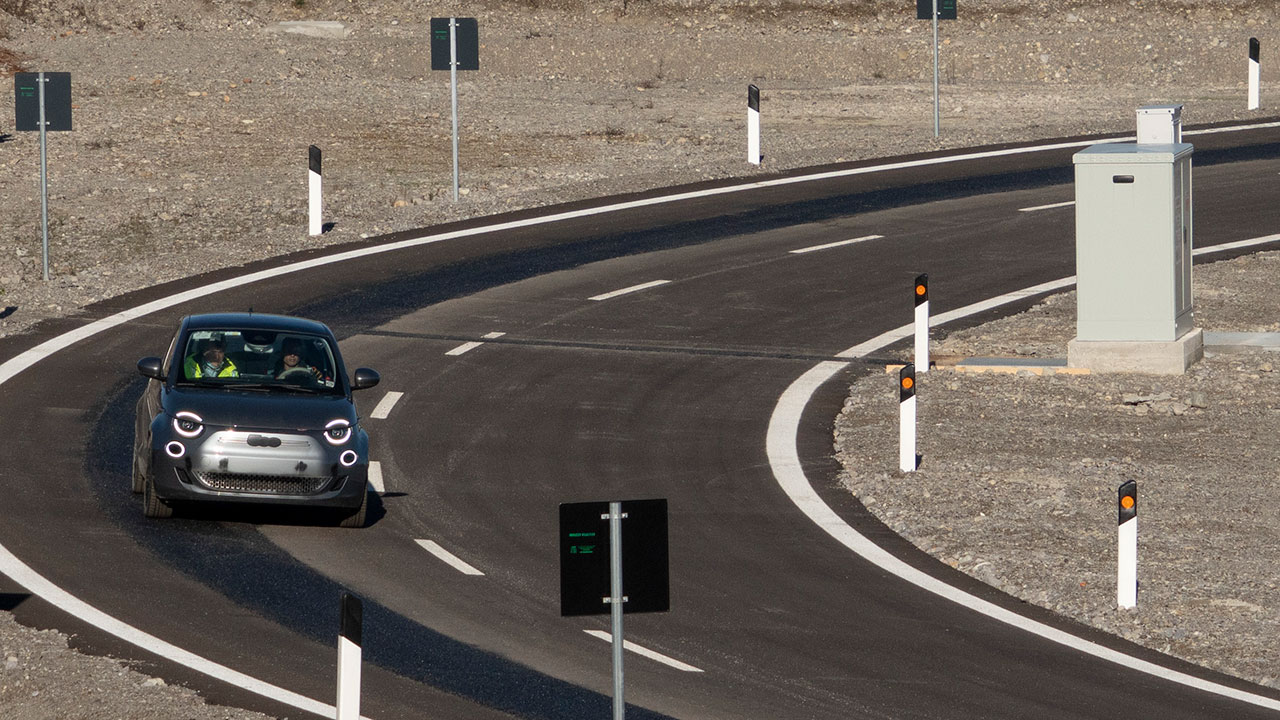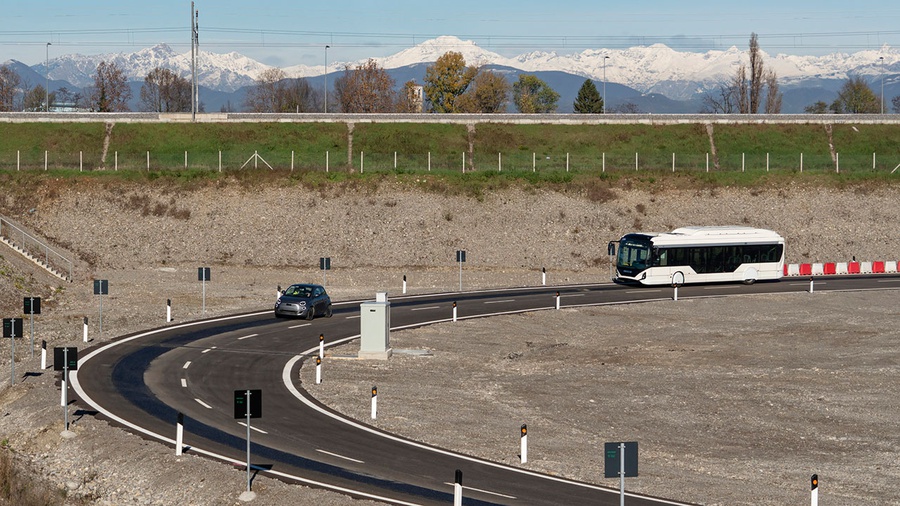After months of testing at the "Arena del Futuro" circuit, Stellantis, together with its project partners, today demonstrated in Chiari, Italy, the capability of Dynamic Wireless Power transfer (DWPT) technology to wirelessly recharge electric vehicles (EVs) as they travel over specially equipped, dedicated road lanes.
DWPT is a system of coils positioned under the asphalt that transfers energy directly to cars, trucks and buses without the need to stop at charging stations to refill the battery. The technology can be adapted for all vehicles equipped with a special "receiver" that transfers the energy incoming from the road infrastructure directly to the electric motor, extending the range, while conserving the vehicle battery charge.
The pilot project of Stellantis and all partners involved is coordinated by A35 Brebemi, a company owned by the global transportation infrastructure operator Aleatica that focuses on sustainable and innovative mobility solutions.
"Our long-term strategic plan, Dare Forward 2030, is based on the premise of bringing 'cutting-edge freedom of mobility' to all and this project is the very essence of where we're headed as a company," said Anne-Lise Richard, Head of Global e-Mobility Business Unit, Stellantis. "Working with this incredible group of partners, we have proven that inductive recharging technology can power our electrified future. These joint projects are exciting steps as we work to achieve longer battery lifespan, lower range anxiety, greater energy efficiency, smaller battery size, outstanding performance and lower weight and cost."
Work at "Arena del Futuro" shows that a BEV, like the Fiat New 500 outfitted to test the system, can travel at typical highway speeds without consuming the energy stored in its battery. Tests are showing that the efficiency of the energy flow from the asphalt to the car is comparable to the typical efficiency of fast charging stations, so the driver does not need to stop to recharge. Furthermore, measurements on magnetic field intensity prove that there is no impact on the driver and passengers.
At the event in Chiari, a Maserati Grecale Folgore was displayed to announce Maserati's upcoming involvement in the project. Folgore identifies the full electric version of Maserati, which will electrify its entire product range by 2025. The Grecale Folgore will be outfitted and run on the "Arena del Futuro" circuit to collect data and deploy a detailed performance analysis.
"Arena del Futuro" is powered by direct current (DC), which offers several concrete and unique advantages, including:
-
Reducing the power losses in the energy distribution process;
-
Guaranteeing a direct integration with renewable energy sources without the need to convert DC into AC;
-
Allowing the use of thinner cables than the AC current distribution with evident advantages in terms of packaging, weight and harmonic pollution; and,
-
Using aluminum cables for current distribution, which is easier to source, costs half compared to copper, and is lighter and easier to recycle in a circular economy business model.
DWPT is one of the technologies intended to simplify the customer approach to electric mobility and ultimately to respond in a tangible way to the requirements for decarbonization and environmental sustainability in the mobility sector. Time magazine cited in-road inductive charging system behind "Arena del Futuro" as one of the 100 most important inventions of 2021.
These goals are achievable thanks to the innovative technologies offered by 5G, IoT (Internet of Things) and AI-based application solutions, which facilitate the exchange of information between the vehicle and the system management platform, increasing road safety and travel efficiency. Inductive energy transfer of DWPT means there are no exposed cables, keeping the road surface safe for people to walk on.
The technology attracts interest for commercial development globally due to its versatility in its dynamic and static inductive versions. In addition to being useful on roads and motorways, it is also suitable when combined with other infrastructures like harbors, airports, and parking lots.
Source: Stellantis


